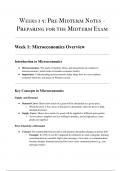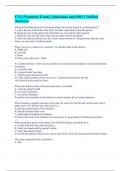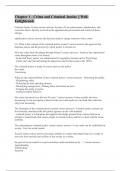Lecture notes
SOCIOL 173 Class Notes - Weeks 1-5 Midterm Exam Prep (Fall 2024)
- Module
- Institution
This document provides detailed class notes for SOCIOL 173 at UCLA, covering all lectures up until the midterm exam. The notes include comprehensive explanations of key concepts discussed in class, such as microeconomics, bounded rationality, neo-institutionalism, markets for singularities, judgmen...
[Show more]








